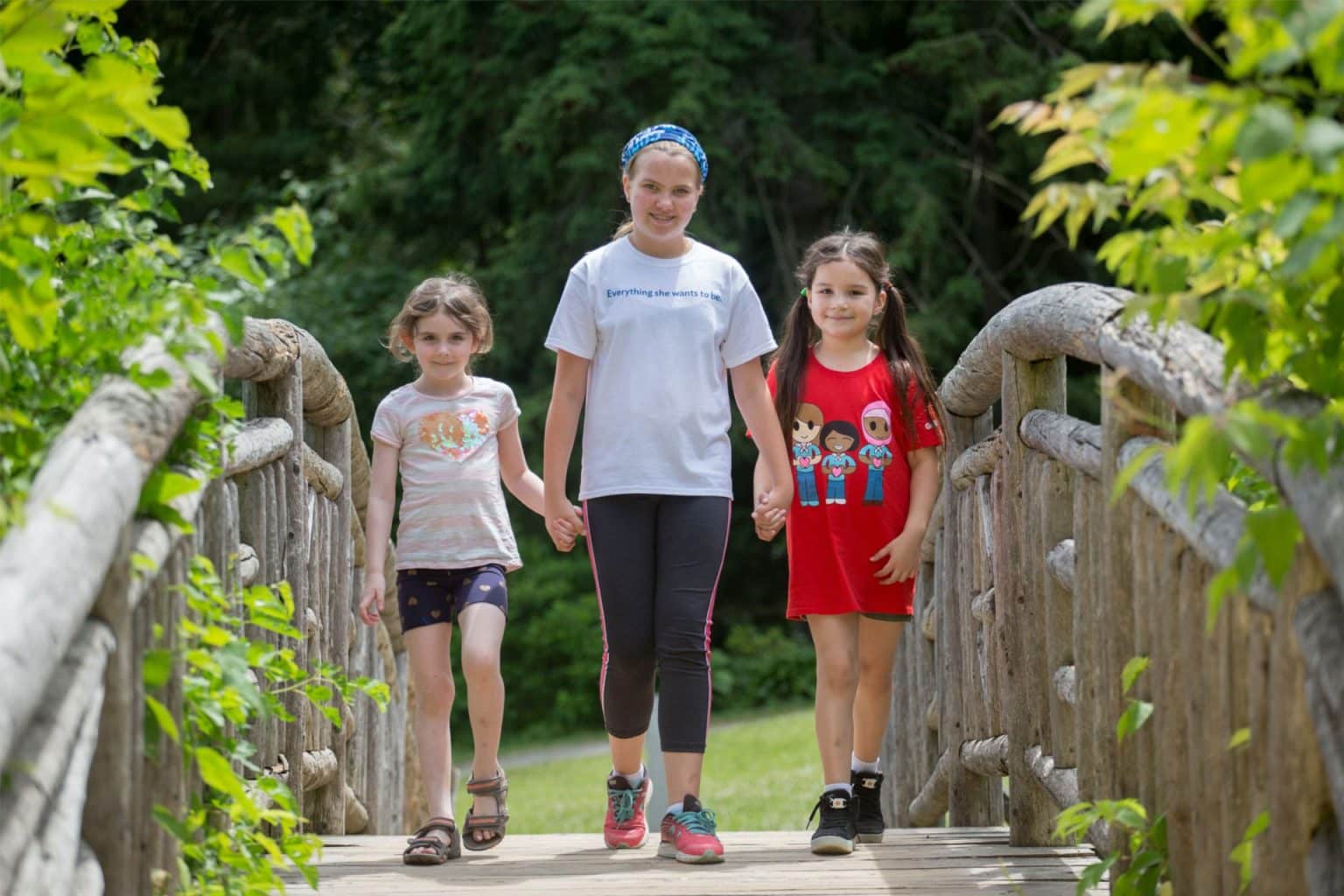I joined Girl Guides in the mid-1980s. Sparks didn’t exist until 1989, so I had to wait until I was six to join Brownies. I loved putting on that little brown dress (yes, the uniforms were dresses then!) and orange kerchief once a week. Brownies seemed untouched by the rest of the day: Even if school hadn’t gone well, or something had happened in the playground, Brownies (and then, for me, eventually Girl Guides and Pathfinders) was a soft place to land. It was a place to learn and to grow; to try new things; to meet new people; or to see my school friends in a different light. Add in that I could earn badges, and I was in my element.
As an adult looking back, Guiding was a formative experience for me. Yes, I know how to tie knots and build a campfire and sew a button because of my time in Girl Guides, but it was more than that. I was in the second grade when I attended my first Brownie meeting, and from that day on, I was consistently given the message that I could be or do anything. I learned leadership and teamwork skills. I learned how to give back. I learned how to solve interpersonal conflicts.
I also played sports and went to art classes around the same age, but in hindsight, Girl Guides offered so much more. It wasn’t just your average extracurricular.
I have two daughters now—Sophie, 10, and Juliette, 7—who are in Guides and Brownies, respectively. It’s interesting to be on this side of the Guiding experience, as a parent watching my children immerse themselves in the program. This is especially true given that the program has evolved so much since I was a kid, taking an already positive rubric and amplifying it for the new generation. “Every five to ten years, we try for a complete redo of the program, to make sure that everything is relevant and meaningful for the kids,” says Ashley Pamenter, Team Lead, Programs, for Girl Guides of Canada. “In 2018, we came up to that renewal point and realized that the program was pretty out of date. So, in this iteration, we really engaged experts working with youth to learn what the kids’ lives were like before we jumped into changing anything.” This consultation resulted in a new focus on 21st century learning skills for the Girl Guides framework, including the six core competencies of modern curriculum (critical thinking, communication, citizenship, creativity, collaboration and growth mindset).
With the program scaffolding in place, the Guiding leadership team took it to the girls themselves. “Once we had a strong basis in research and best practices, we then went to the Guides, Pathfinders and Rangers to ask what they wanted from the program,” says Pamenter. Camping emerged as the number one item on the list (to no one’s surprise!) but the items that followed included more exposure to STEM and more opportunities to build advocacy skills, in addition to the proficiencies already essential to Girl Guides. “They wanted the survival skills that Girl Guides is known for, but also the addition of practical skills for life,” says Pamenter. “It led us in some fascinating directions that we hadn’t investigated before.” Ultimately, the program was revamped to keep “cookies, camping and crafts” but also include more STEM-based learning, more chances to develop the skills required for advocacy and activism, and the renewed message that Girl Guides is “a safe place to fail,” says Pamenter.
“They wanted a safe space, with kids they trust, to ask questions. They wanted to be able to explore and fail. It’s one of the few places in life that girls can fail and it's fine.”
Girl-driven, meaningful exploration is at the root of what Girl Guides has always been, since its introduction in Canada in 1910, and now more than ever, the program is set up to allow for that core tenet to shine through. Unit leaders are given the flexibility to adjust their weekly programming to their specific group of girls, “and sometimes that just means a hike and a chat,” says Pamenter. “It’s about meeting the girls where they are and using the program to meet those needs.” And just like when I was a kid, putting on that Brownie uniform once a week, the sense of empowerment and belonging that is paramount to Guiding remains. “Yes, it’s a place for kids to play and have fun,” says Pamenter, “but it’s also a place to talk and grow and learn important skills and get support…there’s just so much value here.” And I can certainly see that, 35+ years later, in myself and in my kids, who are learning everything from identifying constellations and planting microgreens, to how to moderate an argument between friends.
I guess it’s true that the only constant is change, but it also turns out that the heart of Girl Guides remains the same.
To learn more about Girl Guides of Canada, or to register your daughter for the 2022-23 Guiding year, please go to girlguides.ca.
READ MORE ON GIRLS EMPOWERING GIRLS








